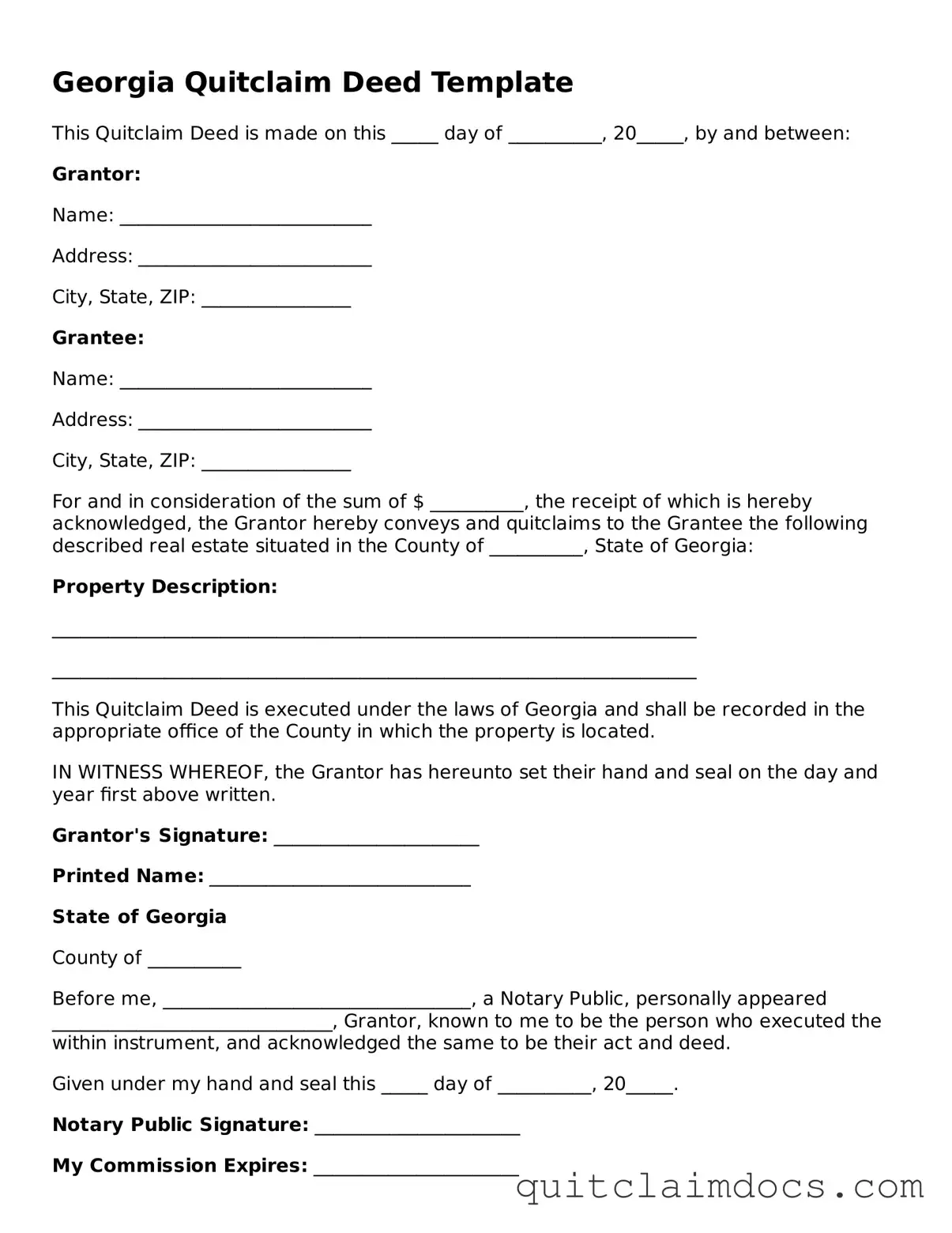Georgia Quitclaim Deed Template
This Quitclaim Deed is made on this _____ day of __________, 20_____, by and between:
Grantor:
Name: ___________________________
Address: _________________________
City, State, ZIP: ________________
Grantee:
Name: ___________________________
Address: _________________________
City, State, ZIP: ________________
For and in consideration of the sum of $ __________, the receipt of which is hereby acknowledged, the Grantor hereby conveys and quitclaims to the Grantee the following described real estate situated in the County of __________, State of Georgia:
Property Description:
_____________________________________________________________________
_____________________________________________________________________
This Quitclaim Deed is executed under the laws of Georgia and shall be recorded in the appropriate office of the County in which the property is located.
IN WITNESS WHEREOF, the Grantor has hereunto set their hand and seal on the day and year first above written.
Grantor's Signature: ______________________
Printed Name: ____________________________
State of Georgia
County of __________
Before me, _________________________________, a Notary Public, personally appeared ______________________________, Grantor, known to me to be the person who executed the within instrument, and acknowledged the same to be their act and deed.
Given under my hand and seal this _____ day of __________, 20_____.
Notary Public Signature: ______________________
My Commission Expires: ______________________
